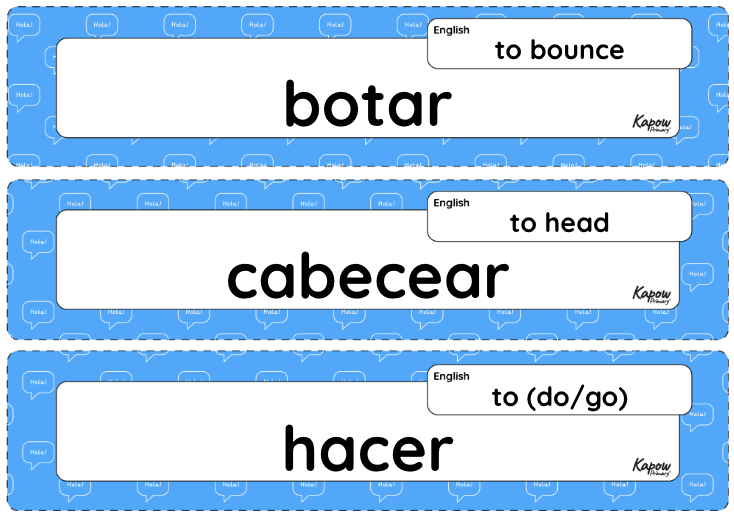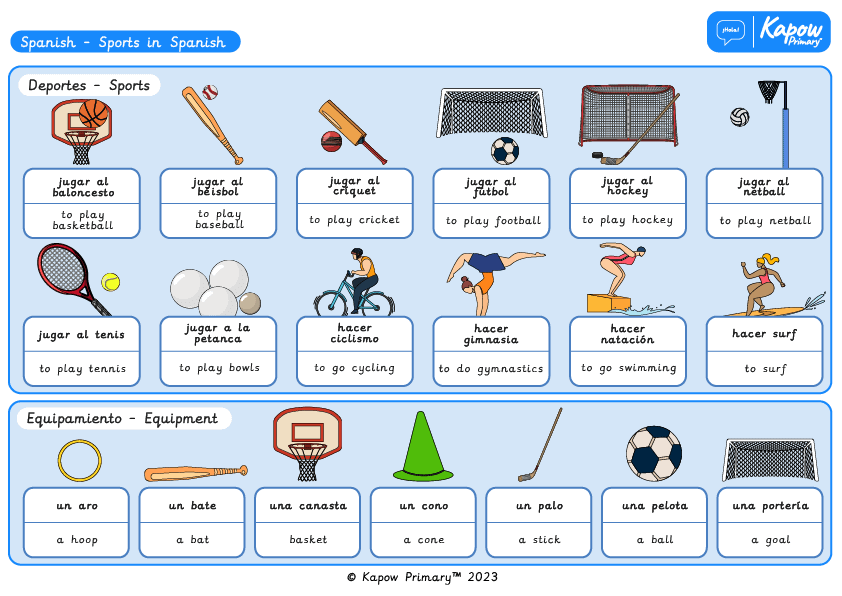This Design and technology video introduces teachers to the progression of juicing and pressing skills taught throughout primary school, equipping them with the knowledge to guide children in safely using age-appropriate tools to extract juice and flavour from foods.
year: Year 6
Vocabulary display – Spanish Y5/6 (B): Sports in Spanish
This unit vocabulary display includes keywords from the unit Spanish, Year 5/6 (B) Sports in Spanish and additional unit-specific words that may be helpful in a display.
Knowledge organiser – Spanish Y5/6 (B): Sports in Spanish
Pupil video: Creating a graffiti-style word
This pupil video supports the lesson where pupils create graffiti-inspired word art, combining lettering, symbolism and colour to represent someone who inspires them.
Pupil video: Drawing for impact
This Art and Design scheme of work video supports the final lesson in Expressing ideas unit, helping children transfer their mural designs onto a final piece of art.
Pupil video: Planning a street-art-inspired design
This video supports pupils in creating a final piece of street art that communicates a clear message using visual elements, layout and materials effectively.
Teacher video: Supporting ideas
This video supports teachers in fostering independence as Key stage 2 pupils plan and create their own street art, building confidence in decision-making and problem-solving.
Pupil video: How to scale using a grid
This video shows how to use the grid method to scale images up or down, helping pupils enlarge their artwork with accuracy and confidence.
Teacher video: Understanding street art
This video introduces street art as a vehicle for pupil voice and expression, helping teachers guide the pupils through meaningful discussions and creative responses.









